
|
Maximum flexibility thanks to software-defined manufacturingAn Interview with Prof. Dr.-Ing. Oliver Riedel Software is not only playing an increasingly important role in products but is also becoming more and more important for managing manufacturing processes. In this interview, Professor Oliver Riedel from the University of Stuttgart explains the advantages that software-defined manufacturing (SDM) offers compared to conventional control architectures, and the challenges that need to be overcome when implementing SDM. 
Question: Professor Riedel, what is software-defined manufacturing? Riedel: The basic idea behind software-defined manufacturing is that you have a very wide range of options for designing manufacturing processes. Instead of programming these processes statically in a control system, like a PLC for example, you achieve a higher level of adaptability by ensuring that the product knows how it is to be manufactured and the associated software can be generated. A second aspect is the fact that manufacturing is steadily moving towards digitalization, and digitalization means more software and networking. The whole thing is driven by business processes that say we need smaller batch sizes, shorter production times and lower costs. The only way to achieve this is to slowly decouple production resources from a dependency on hardware and shift the decision on how manufacturing is performed to the software. To do this, the software will be abstracted from the hardware in future control architectures. Question: To what extent does SDM go beyond Industry 4.0 approaches? Riedel: Industry 4.0 is in many respects a technical enabler. The basic principle involves the paradigm of connecting everything. In the past, there was very good horizontal communication, but vertical communication was only possible via gateways. You could almost say that an ERP system has never communicated with a sensor in production. 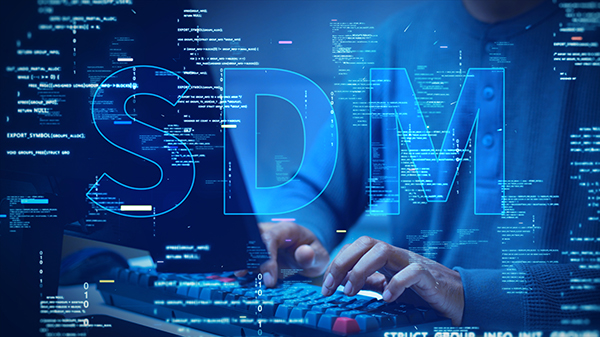
Question: What are the key basic principles of SDM? Riedel: One key basic principle is that thought is given to generalizing manufacturing processes. Take for example a more complex process like the manufacturing of car doors. Why do carmakers need a different door production system for every vehicle instead of a general-purpose system that the door itself provides with the geometric dimensions and the position of the clamping claws for welding? You could produce any door on this system without having to make any changes to the jig as long as you stick to a certain product class. You wouldn't be able to manufacture a refrigerator door, but you would be making your manufacturing process much more flexible by ensuring that the parametric information, workflows, controllers, etc. are no longer hard-coded and instead have properties derived from the variance of the product. Question: Is it possible to implement SDM without a complete digital twin of the production systems? Riedel: Yes. Full stop. As far as I'm concerned, the term digital twin is a buzzword. What is a digital twin? It's a way of mapping processes and resources in digital form with a degree of accuracy that approximates reality. The exact nature of the digital twin depends on the type of processes involved. Conventional processes don't pose a problem, but have you ever seen a digital twin model that takes account of temperature drift? I haven't. 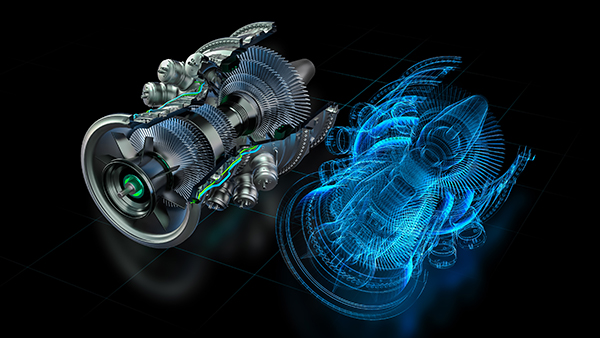
Question: What do you mean by temperature drift? Riedel: It's simple: your process works one way at 20 degrees, another way at 25 degrees and yet another way at 35 degrees. There are already numerous parameters in manufacturing that are well suited for use in virtual commissioning – to use another buzzword. But if the digital twin worked 100 percent correctly, there would be no need to do the last bit of the actual commissioning. Question: Doesn't the fact that the digital twin is never 100 percent accurate limit the possibilities of SDM? Riedel: No, but you don't necessarily need it either. Although we don't have the completely accurate models, we do have observations made in the past and can enrich a sufficiently accurate model with historical data. This is referred to as a "gray box", and this is where SDM is heading and also where the journey into simulation technology is taking us. Question: Does SDM signal the end of programmable logic controllers? Riedel: I wouldn't put it quite that drastically, but the PLC is being reduced to the elementary processes. Although it is still characterized by special hardware, it is slowly moving in the direction of microcontrollers and is in the process of disappearing into the software completely. The next step is virtualizing the PLC in its entirety and running multiple controllers on a single server. SDM can use this technology to make the entire manufacturing process flexible by specifying which controller is to be used and under which process condition. It is even possible to replace different versions during live operation. This already works even for time-critical operations in the millisecond range. 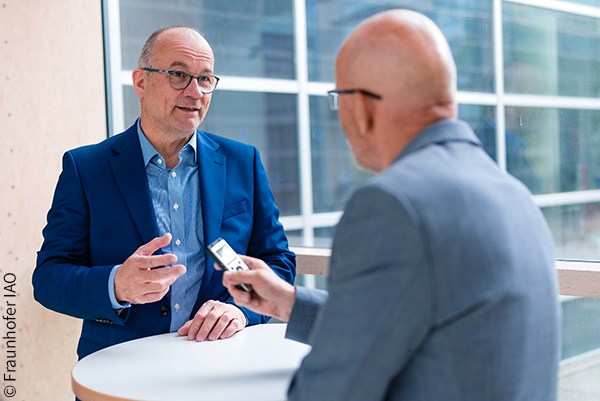
Question: What challenges need to be overcome when implementing SDM? Riedel: There are number of challenges involved. One is the long depreciation period for production equipment. Companies have made a lot of investments that run using old technology. Another is the skill set required. That's why we here at the university and in the research community see it as our job to awaken an understanding of digital processes in traditional mechanical engineers and to make IT nerds understand that their solutions also have to work in manufacturing. Achieving the requisite level of training and awareness at every level of a company isn't easy. You need decision-makers who understand that information management is a factor in manufacturing. Question: Is SDM really compatible with the brownfield approach in manufacturing? Riedel: You can proceed in a way similar to Industry 4.0 and package the brownfield in a shell model. A machine tool that has no mains supply is given a shell and a gateway at field bus communication level, i.e. it is not connected natively but via an interface instead. You can't use it to control all the functionality of the machine but at least you receive data from the system. With SDM, you can also go and encapsulate the brownfield. But of course, a brownfield limits your options. The previously described solution with the clamping claws won't work if the claws are screwed on and don't have any drives. Which means that you have to invest. Question: Does SDM result in additional requirements in terms of cyber security? Riedel: No more than we're already dealing with in the context of Industry 4.0. However, the further you move in the direction of software, the greater the potential danger if someone hacks the system. If in Industry 4.0 you've specified that you're to receive my measurement data from the machine and someone hijacks the machine, they will receive the measurement data. If you can use the same line to parameterize your machine or even replace all the software, then a hacker could cause a lot more damage. That's why you must go to great pains to ensure security. Question: What new skills do employees in manufacturing require for SDM? Riedel: None in manufacturing itself. Workers will not have to learn anything new, but they will be presented with opportunities that they didn't have before. They can, for example, easily move a box in a pick-by-light rack to a different position so that they don't have to bend down so often. This is because every position, every box and every part in the box are interconnected. The light then simply flashes somewhere else. If you want to optimize this today, the production planner would have to change the production plan, reprogram it and create new process instructions for the logistics department – a mountain of work. Question: Are there commercial software applications available for SDM? Riedel: Commercial software is available for many components used in SDM and there are numerous manufacturers who adapt their software accordingly. But there is still no one from whom you can purchase a ready-built SDM solution because SDM is very process-oriented. But you should try to use everything that is commercially available, e.g. the administration shell. 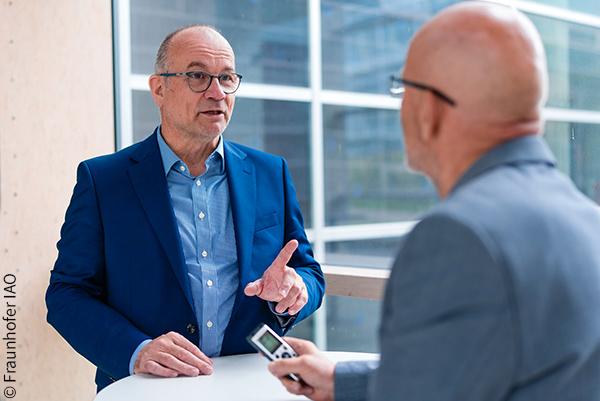
Question: How should companies proceed when switching to SDM? Riedel: Based on our triangle comprising manufacturing, digitalization and business processes, you would start with the processes to see where they are too expensive or not running smoothly rather than starting with production technology or digitalization. You can look at the classic KPIs, like overall equipment efficiency, process efficiency, process costs, number of acceptable parts, etc., and then think about where there is potential for improvement that you can leverage with digitalization. Question: Are there already companies that have implemented SDM in productive use? Riedel: There are, but I don't know if I'm allowed to name names. In the automotive industry, it tends to be the suppliers who press ahead because they are subject to entirely different pressures than the OEMs. Question: What benefits do companies expect from SDM, aside from greater flexibility? Riedel: SDM goes beyond mere flexibilization. You can use it to map completely new and unexpected manufacturing processes. You don't need to know exactly what and how you will be manufacturing in the future. As long as it is physically feasible with the equipment you have, you only need to adapt the software or replace parts of it. Which means that you are completely adaptable to change. This offers enormous potential for optimization, for new business models, and also for AI if its performance capabilities continue to grow. Question: What SDM-specific research projects are being carried out at the University of Stuttgart? Riedel: Together with the University of Karlsruhe, we carried out a project involving car manufacturing called SMD4FZI, which received a huge amount of funding from the federal government. In the project, we placed great focus on manufacturing processes in the automotive industry, primarily in the areas of metalworking and cycled variant production, i.e. areas in which carmakers today have incredibly long lead times and, any time a change is made, downtimes of a few weeks. The demonstrator that we developed is in my office at the Institute for Control Engineering of Machine Tools and Production Equipment (ISW) at the University of Stuttgart. 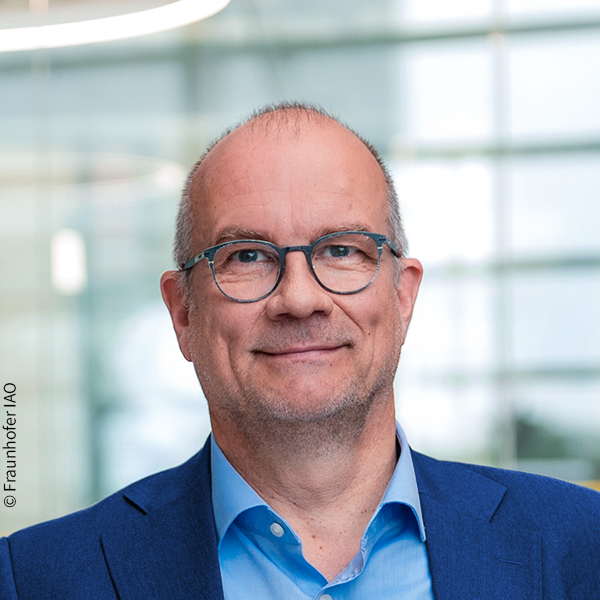
Professor Riedel, thank you very much for this interesting interview. About Professor Riedel Prof. Dr.-Ing. Oliver Riedel studied technical cybernetics at the University of Stuttgart, where he also completed his doctorate. For over 25 years, he has been working on the fundamentals and practical application of virtual validation methods in product development, production and service. During this time, he has held numerous management positions, including in the VW Group. In November 2016, Prof. Riedel was appointed to the University of Stuttgart. There, he holds the Chair of Production Information Technologies, heads the Institute for Control Engineering of Machine Tools and Manufacturing Units (ISW) and is Dean of the Faculty of Design, Production and Automotive Engineering. He has also been Director of the Fraunhofer Institute for Industrial Engineering since June 2018. Prof. Riedel is a member of the Scientific Society for Product Development and Chairman of the Board of the VDI Baden-Württemberg Association. |
|
| © PROSTEP AG | ALL RIGHTS RESERVED | IMPRINT | PRIVACY STATEMENT | YOU CAN UNSUBSCRIBE TO THE NEWSLETTER HERE. |
